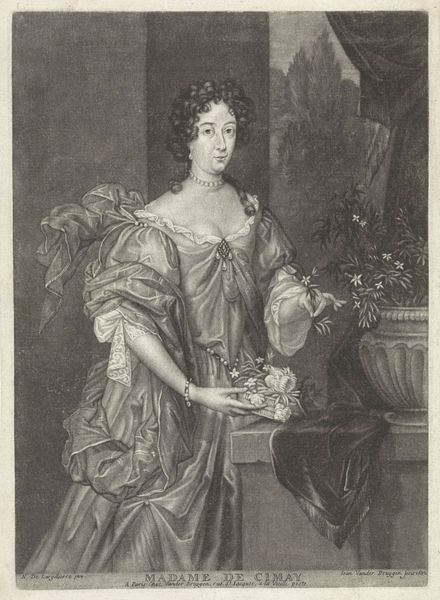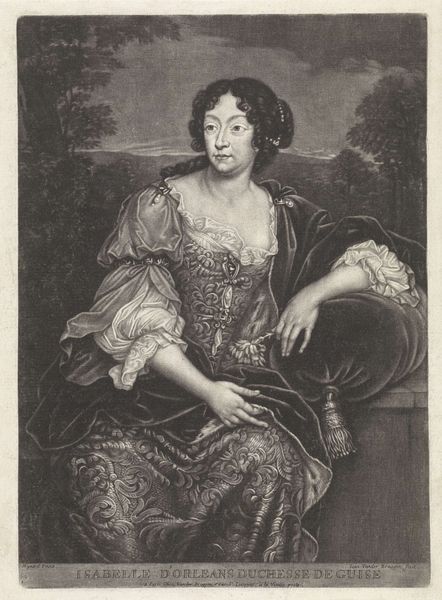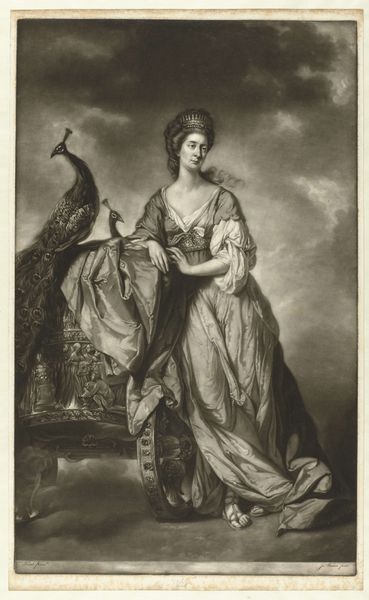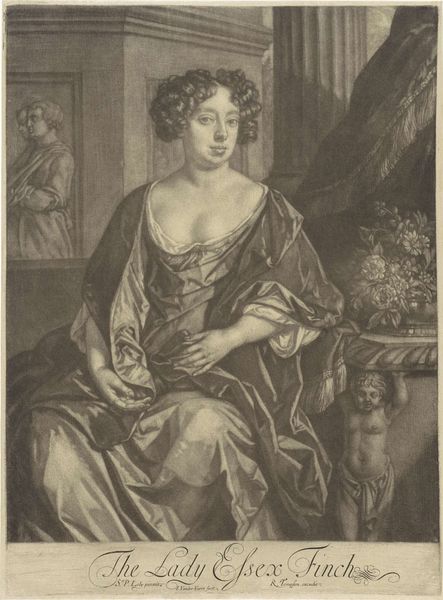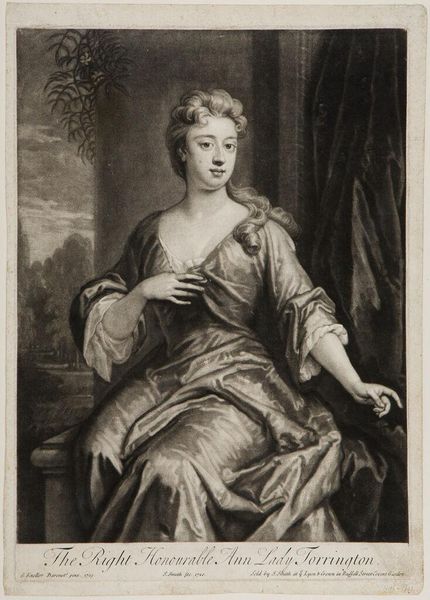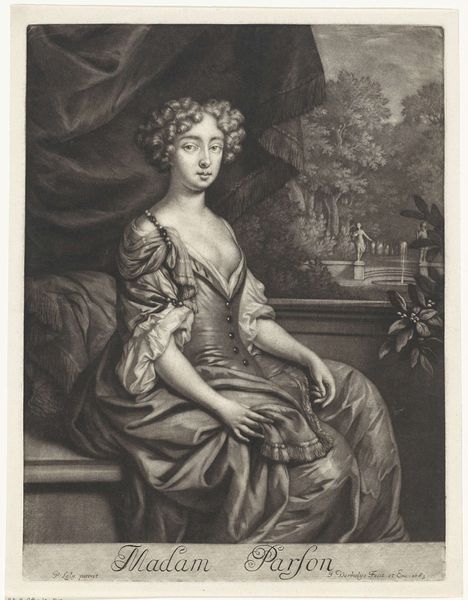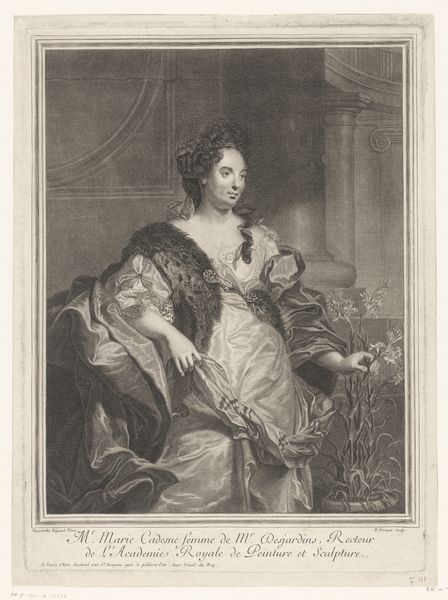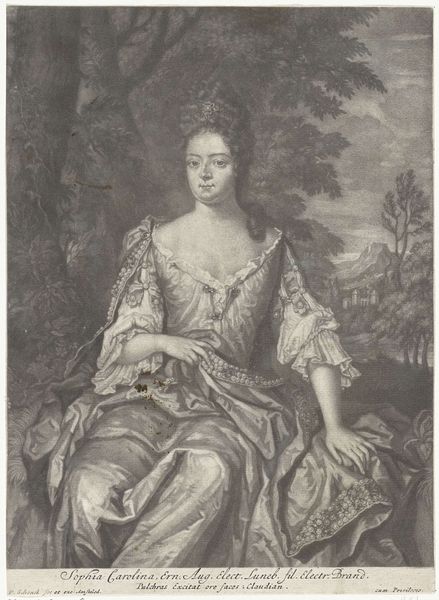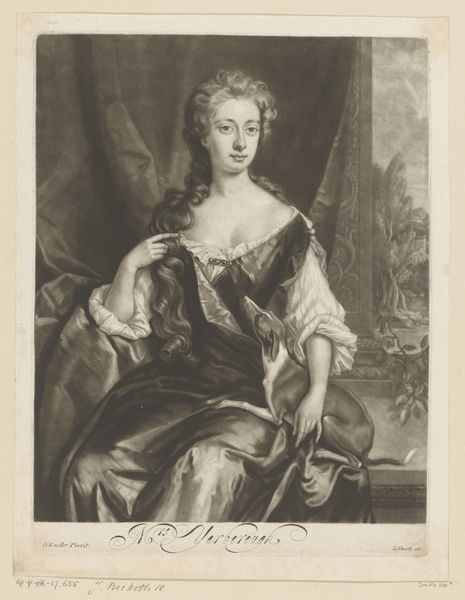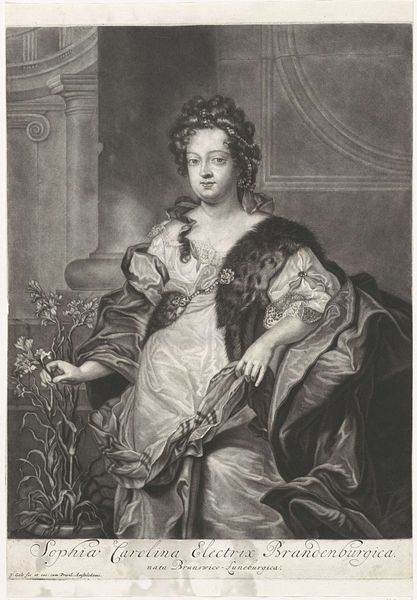
print, engraving
#
portrait
#
baroque
# print
#
dog
#
figuration
#
portrait drawing
#
genre-painting
#
engraving
Dimensions: height 300 mm, width 216 mm
Copyright: Rijks Museum: Open Domain
Editor: Here we have Jan van der Bruggen's 1682 engraving, "Portret van Madama Osorio de Vilasco." The level of detail achieved through the engraving is amazing. It is immediately striking, mostly because of the formal, Baroque style, but what else do you see in this piece? Curator: Note how the composition establishes a dialogue between line and form, most apparently in the interplay between the sitter’s figure and the surrounding drapery. Bruggen balances the stark lines defining architectural structure on the left and right. Can you see how the softness of her features offers a counterpoint to the angularity elsewhere? Editor: Yes, the curves of her hair and dress contrast with the columns in the background. I hadn't considered the interplay between the background and the foreground figures before. Curator: Notice, too, how the arrangement of light and shadow does more than just depict; it structures the narrative. The stark contrast behind her head draws your attention, no? Where does the engraving method break down, can you find places where the method feels insufficient? Editor: I see that her dress and the dog lack strong lines and seem to bleed into the background more, losing a bit of detail compared to her face. Curator: Exactly! Bruggen orchestrates a visual rhetoric, subtly directing our interpretation through deliberate formal choices and considered method, inviting closer inspection beyond initial appeal. Editor: Thank you for showing me that the textures and composition choices really create the feeling of elegance and, on reflection, even wealth. I’ll definitely look more closely at these techniques in other Baroque prints! Curator: A keen eye to semiotics and the material presentation enhances our comprehension of historical artistry. Well done.
Comments
No comments
Be the first to comment and join the conversation on the ultimate creative platform.
